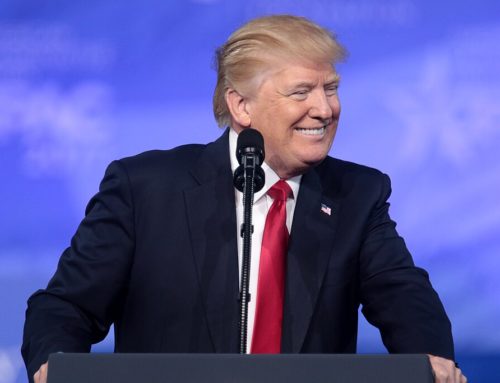1. Investing in the Land of Opportunity: A Review of FDI Trends in the U.S.
The United States has consistently been a beacon for global investors, maintaining its position as the world’s top destination for Foreign Direct Investment (FDI) for the 12th consecutive year. This is a testament to the strength and resilience of the U.S. economy, which continues to attract investors from around the globe.
The U.S. has seen a significant increase in its FDI position, with an increase of $506 billion, or 11.3 percent, last year. This growth outpaces the average increase of 7.1 percent in national currencies for the 112 economies that reported data.
The Committee on Foreign Investment in the United States (CFIUS), an interagency committee, plays a crucial role in reviewing and investigating FDI transactions to determine their effect on national security. The work of CFIUS and the U.S. Department of Commerce’s SelectUSA program, which facilitates job-creating business investment into the United States, has been instrumental in maintaining the U.S.’s leading position.
However, the landscape of FDI is complex and ever-evolving, with various factors influencing investment decisions. This review aims to provide a comprehensive analysis of the current state of FDI in the U.S., examining key trends, challenges, and opportunities.
Background
The United States attracts the most Foreign Direct Investment (FDI) globally due to a variety of factors:
1. Economic Strength:
The U.S. has a sustained and robust economic expansion, which is attractive to foreign investors.
2. Business Climate:
The U.S. provides a stable business climate, which allows foreign companies to invest in a secure and stable environment.
3. Tax and Regulatory Reforms:
The U.S. has implemented tax and regulatory reforms, such as reducing the corporate tax rate from 35% to 21%, which frees up capital for investment.
4. Ease of Doing Business:
The U.S. is consistently ranked among the best countries for its overall positive business climate.
5. Workforce:
The U.S. workforce is one of the most diverse, skilled, and productive workforces in the world.
6. Innovation:
More international patents are filed in the U.S. than any other country. U.S. intellectual property laws protect ownership and help combat counterfeiting and cybertheft.
7. Consumer Market:
The U.S. has the largest consumer market in the world, with a GDP of $20 trillion and 325 million people. Free-trade agreements with 20 other countries provide access to hundreds of millions of additional consumers.
These factors combined make the U.S. a highly attractive destination for FDI. However, it’s important to note that the landscape of FDI is complex and ever-evolving, with various factors influencing investment decisions.
Sectors
Foreign Direct Investment (FDI) in the United States has seen some significant activities recently. Here are a few highlights:
1. Manufacturing Sector:
In 2022, the manufacturing sector saw the largest expenditures for new direct investment, totaling $55.2 billion, accounting for 31.1 percent of total expenditures⁴. Within manufacturing, expenditures were largest in chemical manufacturing ($21.5 billion) and machinery ($9.9 billion).
2. Information Sector:
There were also notable expenditures in the information sector ($28.2 billion).
3. Investments by Country:
By country of ultimate beneficial owner (UBO), the largest investing country was Canada, with expenditures of $37.9 billion. The United Kingdom ($34.7 billion) was the second-largest country, followed by France ($16.5 billion).
4. Investments by State:
By state, California received the most investment, totaling $29.0 billion, followed by Texas ($20.7 billion) and Illinois ($10.9 billion).
5. Greenfield Investments:
Greenfield investment expenditures—expenditures to either establish a new U.S. business or to expand an existing foreign-owned U.S. business—were $8.1 billion in 2022.
Examples
1. TSMC:
The world’s largest semiconductor company, TSMC, announced plans to build a second semiconductor facility at its US site in Phoenix, Arizona, in December 2022.
2. SK Hynix:
SK Hynix, a South Korea-based supplier of dynamic random access memory chips and flash memory chips, plans to invest an estimated $15bn to build a new advanced chips packaging manufacturing facility in the US. The investment is likely to create around 1,000 jobs.
In 2022, expenditures by foreign direct investors to acquire, establish, or expand U.S. businesses totaled $177.5 billion. The largest investing country was Canada, with expenditures of $37.9 billion. The United Kingdom ($34.7 billion) was the second-largest country, followed by France ($16.5 billion).
By industry, expenditures for new direct investment were largest in the manufacturing sector, at $55.2 billion, accounting for 31.1 percent of total expenditures. There were also notable expenditures in the information sector ($28.2 billion).
The United States has been ranked as the top destination for foreign direct investment for the 12th consecutive year according to Kearney’s Global Business Policy Council’s 2024 Foreign Direct Investment (FDI) Confidence Index.
2. Cisco’s Strategic Move: A New Cybersecurity Hub in Taiwan

Kaizer Bienes via Unsplash
In a groundbreaking move that underscores the importance of cybersecurity in today’s digital age, American multinational technology conglomerate, Cisco, has announced plans to establish a state-of-the-art cybersecurity center in Taiwan. This initiative, part of Cisco’s broader Taiwan Digital Acceleration Plan 3.0, is set to bolster Taiwan’s digital security infrastructure and address the global talent shortage in the cybersecurity sector.
The new center will not only serve as a hub for innovation and advanced threat intelligence but also aims to enhance cyber readiness in the region. In addition to this, Cisco is planning to collaborate with the Taiwanese government to train more people to work in cybersecurity. This partnership signifies a significant step towards creating a robust cybersecurity ecosystem and fostering talent in this critical field.
As we delve deeper into this article, we will explore the implications of this development, its potential impact on the global cybersecurity landscape, and how it aligns with Cisco’s ongoing efforts to enhance digital security infrastructure worldwide.
Implications
Cisco’s decision to establish a cybersecurity center in Taiwan carries significant implications:
1. Boost to Taiwan’s Cybersecurity Infrastructure:
The new center will enhance Taiwan’s digital security infrastructure, providing advanced threat intelligence and cyber readiness.
2. Addressing Global Talent Shortage:
Cisco plans to collaborate with Taiwan’s government to train more people in cybersecurity, addressing a global talent shortage in this sector.
3. Economic Impact:
The establishment of the center is likely to stimulate economic activity and create jobs in Taiwan.
4. Innovation and Research:
The center will serve as a hub for innovation and research in cybersecurity, potentially leading to breakthroughs in this field.
5. Partnership with Government:
Cisco’s collaboration with the Taiwanese government signifies a strong public-private partnership, which could set a precedent for future collaborations in other sectors.
6. Regional Security:
By enhancing Taiwan’s cybersecurity capabilities, the center could contribute to regional security in the face of increasing cyber threats.
Strategic efforts
Cisco’s decision to establish a cybersecurity center in Taiwan carries significant implications:
1. Boost to Taiwan’s Cybersecurity Infrastructure:
The new center will enhance Taiwan’s digital security infrastructure, providing advanced threat intelligence and cyber readiness.
2. Addressing Global Talent Shortage:
Cisco plans to collaborate with Taiwan’s government to train more people in cybersecurity, addressing a global talent shortage in this sector.
3. Economic Impact:
The establishment of the center is likely to stimulate economic activity and create jobs in Taiwan.
4. Innovation and Research:
The center will serve as a hub for innovation and research in cybersecurity, potentially leading to breakthroughs in this field.
5. Partnership with Government:
Cisco’s collaboration with the Taiwanese government signifies a strong public-private partnership, which could set a precedent for future collaborations in other sectors.
6. Regional Security:
By enhancing Taiwan’s cybersecurity capabilities, the center could contribute to regional security in the face of increasing cyber threats.
7. Investment in AI and Sustainability:
As part of Cisco’s Taiwan Digital Acceleration Plan 3.0, the company will also focus on artificial intelligence in areas like transport and sustainability operations at Kaohsiung port.
8. Investment in AI and Sustainability:
As part of Cisco’s Taiwan Digital Acceleration Plan 3.0, the company will also focus on artificial intelligence in areas like transport and sustainability operations at Kaohsiung port.
These implications highlight the strategic importance of Cisco’s investment in Taiwan and its potential to reshape the cybersecurity landscape in the region. It will be interesting to see how these plans unfold and their impact on Taiwan’s digital economy.
3. Engineering a New Era: India’s Potential FTA with Mexico

Roberto Sorin via Unsplash
In the ever-evolving global economic landscape, nations are constantly seeking strategic partnerships to bolster their industries and expand their markets. One such promising alliance is currently being explored between two vibrant economies: India and Mexico. This article delves into the potential of a Free Trade Agreement (FTA) between these nations, with a specific focus on boosting India’s engineering exports.
India, renowned for its robust engineering sector, is eyeing Mexico, Latin America’s second-largest economy, as a potential trade partner. The exploration of an FTA with Mexico signifies India’s strategic move to diversify its export destinations and reduce dependency on traditional markets. This potential partnership could unlock numerous opportunities for Indian engineering firms, fostering innovation, creating jobs, and driving economic growth.
Stay tuned as we unpack the potential impacts, challenges, and benefits of this prospective trade agreement, and what it could mean for the future of India’s engineering industry.
Challenges
Negotiating a Free Trade Agreement (FTA) between two countries is a complex process that involves addressing a variety of challenges. Here are some potential challenges in negotiating an FTA between India and Mexico:
1. Market Access Limitations:
The scope for increasing market access for Indian goods in Mexico may be limited. This could pose challenges for trade expansion efforts.
2. Competition from Other Countries:
Mexico’s investment commitments may face competition from other countries like Vietnam. This could potentially impact India’s ability to attract investment.
3. Economic Integration with the US:
Mexico’s economy is closely integrated with the US, with around 83% of all Mexican exports destined for sale in the US domestic market. This could influence the terms of an FTA with India.
4. Ongoing FTA Negotiations:
India is currently preoccupied with ongoing FTA negotiations with the UK, Australia, and other partners. This could delay the negotiation process with Mexico.
5. Diverse Economic Structures:
Both countries have diverse economic structures, with Mexico having a mixture of modern, export-oriented industry and agriculture-based economy. Aligning the interests of these diverse sectors could be challenging.
These challenges highlight the complexity of international trade negotiations and the need for careful planning and strategic decision-making. However, overcoming these challenges could open up significant opportunities for both countries.
Benefits
An India-Mexico Free Trade Agreement (FTA) could bring several potential benefits for both countries:
1. Diversification and Expansion of Export Markets:
An FTA would provide zero-duty entry into partner country markets, helping in the diversification and expansion of export markets¹. This could be particularly beneficial for India’s engineering sector.
2. Level Playing Field:
An FTA would provide a level playing field with competitors who may have already entered FTAs with partner countries.
3. Preferential Treatment:
FTAs enable preferential treatment in the partner country market over non-FTA member country competitors.
4. Access to the U.S. Market:
The proposed FTA could potentially open up new opportunities for India’s engineering sector to tap into the lucrative U.S. market indirectly.
5. Strengthened Economic Ties:
The economic dynamics between India and Mexico create a complementary relationship, brimming with opportunities for mutual benefit through strengthened economic ties.
6. Enhanced Cooperation in Various Sectors:
The two sides have agreed to enhance cooperation in pharmaceutical, medical equipment, healthcare, agri-products, fisheries, food processing, and aerospace industries.
These benefits highlight the potential of an India-Mexico FTA to boost trade, foster economic growth, and strengthen bilateral relations.
4. Top Chinese official visits Brussels

Najib Samatar via Unsplash
In an era where global diplomacy and international relations are more crucial than ever, the recent visit of a high-ranking Chinese official to Brussels marks a significant event. This article delves into the intricacies of this visit, exploring its implications for both China and the European Union. As the political and economic landscapes continue to evolve, such diplomatic engagements offer a glimpse into the future of international cooperation and policy-making. Join us as we unpack the details of this visit and what it means for global diplomacy.
Discussion topics
During the visit of the Chinese official to Brussels, several key topics were discussed:
- Trade Tensions and Tariffs:
The escalating trade tensions between Beijing and the European Union were a major point of discussion. The European Commission’s decision to impose extra duties of up to 38 percent on Chinese electric vehicles was expected to feature prominently in the talks. This issue was expected to be raised by the Chinese official.
- Environment and Climate Dialogue:
The Chinese official co-chaired the EU-China High-Level Environment and Climate Dialogue. This marked the most senior visit by a Chinese official to the EU capital since 2019.
- Economic Connections:
The discussions also aimed at fostering economic connections. The Belgian Prime Minister and Minister of Foreign Affairs were set to join the Chinese official for engagements with President Xi Jinping, Prime Minister Li Qiang, and Zhao Leji, the Chairman of the National People’s Congress.
- Sino-Belgian Relationships:
All aspects of Sino-Belgian relationships were key to the discussions. This visit offered renewed interaction and high-level re-engagement opportunities.
- Cybersecurity and Interference:
Issues regarding a former Vlaams Belang MP being exposed as an informer for the Chinese intelligence services, and a cyberattack on the Ministry Defence attributed to a “Chinese group” were also expected to be discussed.
- Human Rights:
NGOs urged the Belgian Government to raise the topic of Tibet with Chinese officials during the trip. The issue of Uighurs in China was also a point of concern.
These discussions reflect the complex and multifaceted nature of the relationship between China and the European Union. They highlight the need for ongoing dialogue and negotiation in the face of evolving global challenges.
Trade and human rights
The EU officials had a clear stance on both trade and human rights issues during their discussions with the Chinese official.
On Trade: The European Union officials expressed their willingness to hold talks with China on the EU’s recent decision to sharply raise tariffs on imports of Chinese-made electric vehicles. This shows the EU’s openness to dialogue and negotiation on trade issues.
On Human Rights: The EU has been vocal about its concerns regarding human rights violations in China. After an EU delegation visited Tibet and met with Chinese officials, the EU repeated calls for China to stop human rights violations. They urged China to investigate any rights violations and expressed concern about cases of unlawful detention, enforced disappearance, torture, and ill-treatment. The EU also raised the case of the detained Swedish citizen Gui Minhai as well as the imprisoned Uyghur intellectuals Ilham Tohti, Gulshan Abbas, and Rahile Dawut.
However, China dismissed the EU’s comments on human rights and opposed what it called “double standards” and interference in its internal affairs. Despite this, the EU continues to call for meaningful, unrestricted, and unsupervised access by independent international experts, foreign journalists, and diplomats to Tibet, Xinjiang, and elsewhere in China.
These responses reflect the EU’s commitment to uphold human rights and fair trade practices in its relationship with China. It also highlights the challenges and complexities involved in navigating these sensitive issues.
Featured image Ferdinand Stohr via Unsplash







